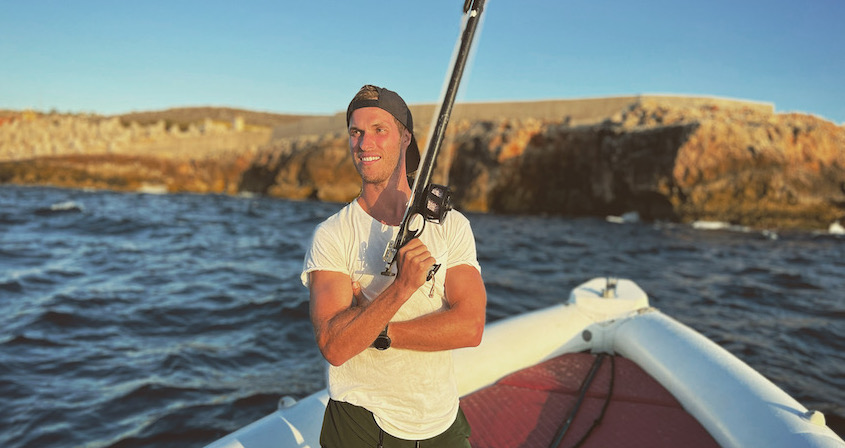Spearfishing in the Sea of Crete

Walking down a crowded alleyway in Chania, we spotted a scuba diving shop with a rack of spearfishing guns on display. I hadn’t considered spearfishing as an activity in Crete, but after holding these spearguns, it was all I wanted to do.
A few days later, we went out with Seaze the Day on a private charter spearfishing trip.
Arielle and I were on a boat with two guides. The activity started a little slow because we had to get instruction and learn how to spearfish—this involved mainly watching and not shooting. Basically, spearfishing is a sport with a learning curve and not exactly an activity you can just do. From my brief experience spearfishing, I’d say that the sport breaks down into three things: free diving, finding the fish and learning how to shoot.
1. Free Diving
Our guides were former professionals and could hold their breath for over two minutes and swim as deep as 130 feet on a single breath. To put that in perspective, the max depth I’ve ever scuba-dived is just over 130 feet and these guys could do that without a tank.
We started out in a deep section of the sea while these guys taught us some tricks about free diving: breathing techniques, positioning ourselves completely vertically when diving down, and using your buddy to push you down (for that extra boost). These guys would then dive 60 feet, look under rocks for over a minute and then surface, most of the time with a fish. (This was the slower instruction part of the experience.)
2. Finding the fish
As mentioned, looking under rocks for fish was a key part of this sport. There were two advantages: one, a lot of fish would be under these rocks and two, they were often floating still (vs. swimming/moving) so it was easier to shoot them.
We moved locations to a shallower bay where Arielle and I could dive down 5–10 meters, be on the sea’s floor and look under rocks for the fish. This is when the action started happening as Arielle and I both got our own guns and were given the freedom to shoot at will. While we shot at a lot of fish, these fish were mostly small targets—not ideal for spearfishing or eating after. One thing against the Sea of Crete is that there wasn’t a lot of big fish for us to shoot at.
3. Learning how to shoot
The speargun has a metal spear with a thick rubber band that shoots it out like a slingshot. The spear is on a wire so that when you get a fish, you can just reel it in. With our spear guns, the spear didn’t go that far or even shoot that straight. Combine this with holding your breath, foggy goggles and skewed vision under the water and you quickly learn that being a “good shot” above water does not necessarily translate.
The mistake I made at the beginning is that I’d dive on an angle, be moving my arms back and forth, shoot down on the fish and do it from far away, as if I was some sniper. What I quickly learned was that it was better to dive straight down, lie flat on the sea floor and swim parallel to the ground, so that you could shoot straight at the fish (instead of down or on an angle). To guarantee a successful shot, it was best to swim as close to the fish as possible. While this “close shot” was less glorious than the alternative sniper shot, it had a few advantages: easier to aim for the target, less distance for the spear to travel and less time for the fish to react.
Overall, spearfishing in the Sea of Create was an absolute blast. Next bucket list item: check out the best places to spearfish, so I can spear bigger fish and experience the sport even further.